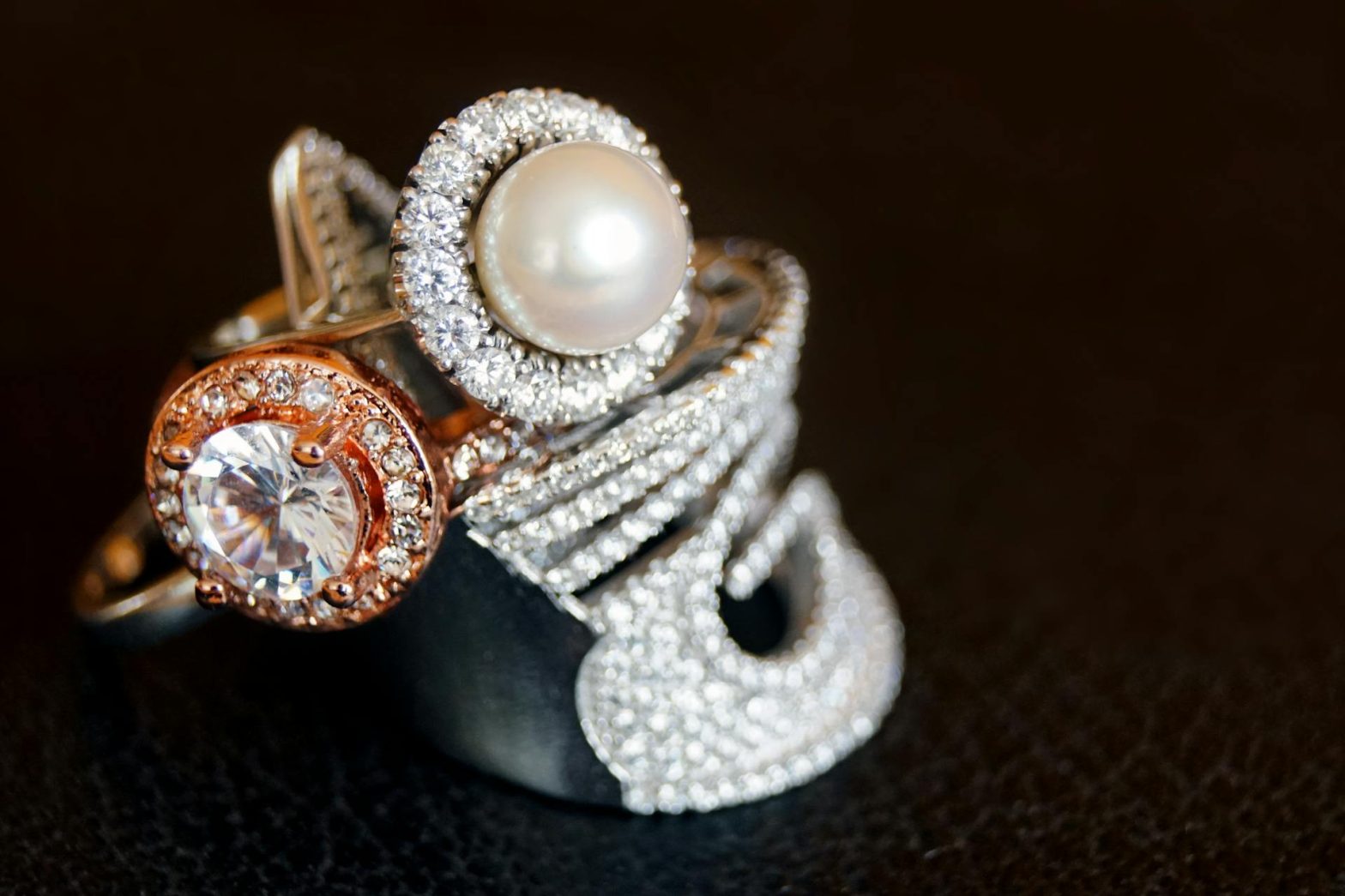Vintage jewelry and accessories are more than simple embellishments of eras gone by – they’re reflections of their time, culture, and style. From glamourous ‘50s to bold ‘70s to minimalist ‘90s, each decade has its own trend and personal story to tell.
Whether you’re interested in the history of vintage jewelry purely from a theoretical point of view or you’re looking for inspiration for your next statement piece or even an engagement ring, here is everything you need to know about the fascinating evolution of vintage and not-so-vintage accessories.
1950s: Elegance and Glamour
Ah, the 1950s, when post-war optimism filled the air and fashion reflected the newfound hope and prosperity. This decade was all about Hollywood glamour and elegance, with stars like Audrey Hepburn and Grace Kelly setting the trends. The talented Hepburn often wore simple pearl necklaces and earrings, which were a perfect representation of the understated elegance of this time. On the other, more glitzy side of the coin, there was Merlyn Monroe and her luxurious diamond necklaces and chandelier earrings.
Pearls, diamonds, rhinestones, yellow gold, and white gold were favorites among the classy ladies of the ’50s. Simple, gold button earrings were extremely popular, but so were shiny jewels for date nights.
Engagement rings, however, were usually understated: classic, pretty, with intricate details. Platinum and white gold bands adorned with small but sparkly diamonds were all the rage. After all, this was a time of classic beauty and sophistication.
1960s: The Bold Swinging Sixties
The swinging sixties brought about a revolution in both fashion and jewelry. This was a time of bold experimentation and self-expression, so pieces became more playful and colorful, mirroring the vibrant spirit of the era.
In addition to psychedelic motifs on practically everything, the style of this decade was full of statement pieces: big and bold earrings, chunky bracelets, extravagant necklaces, everything was a representation of this era’s rejection of traditional norms.
For example, while gold jewelry and classic pearls were still popular among the more conventional folk, eclectic accessories of this decade were, when you really think about it, all over the place. From plastic earrings adorned with rhinestones (which even Hepburn wore only adorned with pearls, of course) to vibrantly colored geometric pendants all the way to timeless black and white jewelry, the accessories of this era were all about individuality.
Even engagement rings looked more unique than they did in the previous decade. From unconventional gemstones to intricate designs inspired by nature, couples embraced the freedom to express their love in unconventional ways, which, we have to admit, we find endearing and even preferable over the often too simplistic pieces we see today. A vintage black diamond ring? Yes, please!
1970s: Boho Chic and Natural Elements
If you thought the sixties were bold, wait until we step into the seventies, a decade of vibrant individuality and audacious style. This was a time of important sociopolitical changes, which were reflected in people’s choice of clothes and accessories. But while bold, the fashion of this decade was also laid-back and often natural-looking, with earthy tones and materials like wood, shell, and turquoise gaining popularity.
If you’re a fan of layering jewelry, this is the decade to explore. In the ‘70s, people, and especially the ladies, loved layering both their clothes and accessories: from wearing multiple chain necklaces to stacking bracelets of different textures to wearing multiple rings on a single finger, folks were all about expression through fashion. Wearing necklaces on top of turtlenecks was also all the rage.
As far as engagement rings go, they often featured unconventional gemstones like turquoise, opal, and amber. Just like in the previous decade, couples often went for non-traditional designs, opting for unique and symbolic motifs that reflected their personalities.
1980s: Decadence and Opulence
The ‘80s were a decade of excess in, well, pretty much everything. Accessories and jewelry also reflected the era’s larger-than-life attitude, so there were lots of bold, statement pieces like oversized earrings and chunky chains, all adorned with colored gemstones, crystals, and rhinestones.
This is also the era of oversized hoop earrings: large and extravagant, earrings were often the first thing you would notice on a woman. Chunky gold chains were also extremely popular, partly thanks to hip-hop culture, which was gaining in popularity, and partly because this was an era of grandiosity. Jewelry became a symbol of power and status, with designers pushing the boundaries of luxury and opulence.
1990s: Minimalism and Grunge
The 1990s were a stark contrast to the flashy excess of the ’80s. During this decade, jewelry became more subdued, but don’t mistake that for boring; no, the ’90s were a strange time of minimalism and grunge, a combination that gave birth to some truly unique styles. Accessories looked much simpler than they did in the ‘80s, but they were still bold and expressive.
This was the era of chokers, which came in a variety of materials, from luxurious velvet to edgy leather. They were, perhaps, the best representation of the ‘90s obsession with grunge.
But of course, chokers were just one piece of the fashion puzzle: mood rings, beaded bracelets, tattoo-inspired accessories, and all types of piercings became the epitome of cool, reflecting a desire for authenticity and individuality. The ‘90s hip-hop celebrities also introduced ‘bling’ to the everyday man: large gold chains, diamond-encrusted pendants, and big watches were extremely popular, too.
Engagement and wedding rings, however, were all about simplicity and understated luxury. Solitaire diamonds set in sleek platinum or white gold bands became popular choices for couples seeking timeless elegance.
And here we are now – every piece of jewelry, every accessory you see today is influenced in one way or another by the past. From the glamour of the 1950s to the boho chic of the 1970s and the minimalist aesthetic of the 1990s, each era has left its mark on the fashion world of today.












































